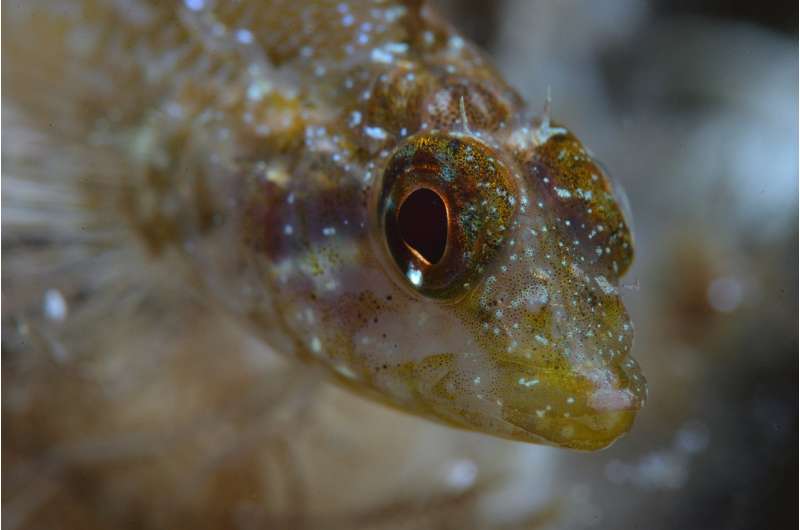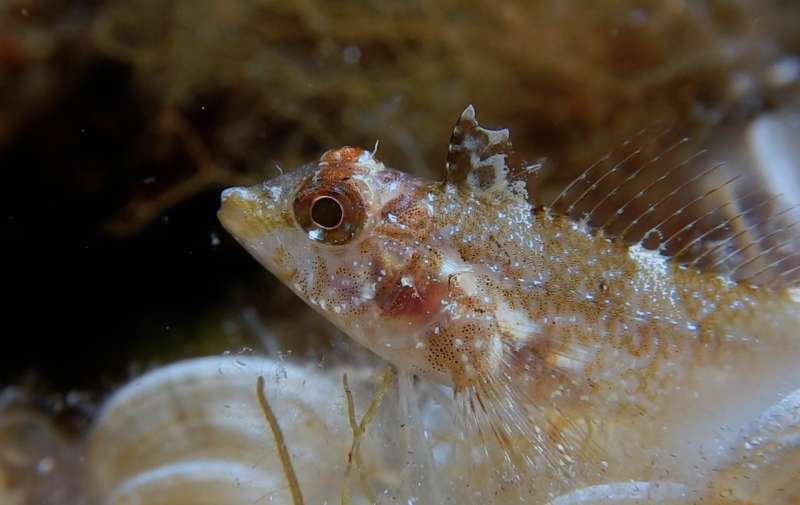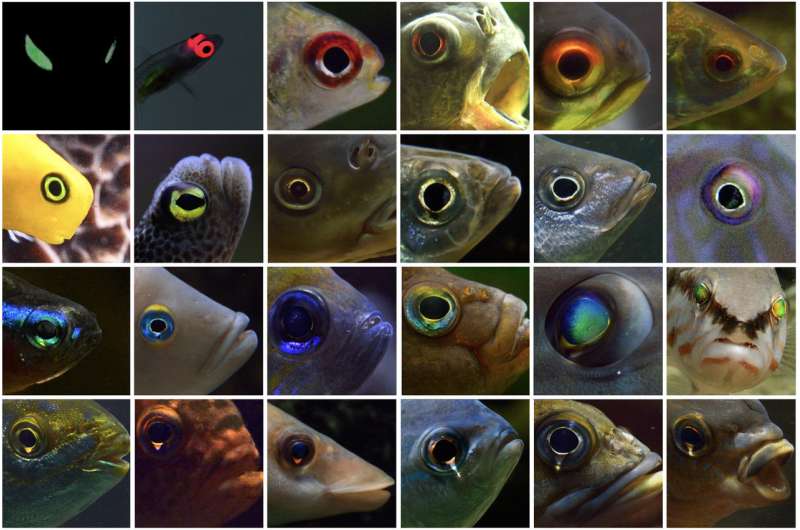February 21, 2018 report
Triplefin fish found to have controlled iris radiance

A team of researchers with the University of Tübingen in Germany has found an example of a fish that is able to control light reflected from organs next to its pupils—a form of photolocation. In their paper published in the journal Royal Society Open Science, the group describes their study of the fish and their findings and also offers some theories on the purpose of the skill.
As the authors note, several species have been found to use bounced sound to navigate or locate prey—forms of echolocation. And other sea creatures use light reflected off their own organs to help them see better in deep water. In this new effort, the researchers have found an example of a fish that is able to control such organs—a first.
The fish is the triplefin, and it is rather small at just two to three inches in length. They are native to the eastern part of the Atlantic Ocean and the western part of the Mediterranean Sea. They typically live in shallow areas, but some live in much deeper water at depths up to 50 meters, where sunlight is obscured. Prior research has shown that the fish hunt by lying still near the sea floor until prey comes near—at that point, they swim closer and strike quickly. But what sets the triplefin apart from other fish is the glowing red or blue that surrounds its pupils.
The researchers discovered that the eye color often changes back and forth as the fish stalks its prey, suggesting it could change the color on demand. The light is not emitted from the eyes, the researchers note, but is instead reflected from available light coming down from above. Thus, to change the color on demand, the fish would have to be able to physically move eye components to reflect different parts of the light spectrum.

To test for this, the researchers looked at the reflective eye regions in the iris, which they called "ocular sparks" and found that simple eye movements could indeed allow them to adjust color on-demand. They also tested the fish by adding different colored backgrounds to a tank filled with water and found that the fish tended to reflect blue light when there was a red background and vice versa—and also when small prey was near. Both observations, the team notes, show the fish is truly able to control its photolocation abilities.

More information: Nico K. Michiels et al. Controlled iris radiance in a diurnal fish looking at prey, Royal Society Open Science (2018). DOI: 10.1098/rsos.170838
Abstract
Active sensing using light, or active photolocation, is only known from deep sea and nocturnal fish with chemiluminescent 'search' lights. Bright irides in diurnal fish species have recently been proposed as a potential analogue. Here, we contribute to this discussion by testing whether iris radiance is actively modulated. The focus is on behaviourally controlled iris reflections, called 'ocular sparks'. The triplefin Tripterygion delaisi can alternate between red and blue ocular sparks, allowing us to test the prediction that spark frequency and hue depend on background hue and prey presence. In a first experiment, we found that blue ocular sparks were significantly more often 'on' against red backgrounds, and red ocular sparks against blue backgrounds, particularly when copepods were present. A second experiment tested whether hungry fish showed more ocular sparks, which was not the case. However, background hue once more resulted in a significant differential use of ocular sparks. We conclude that iris radiance through ocular sparks in T. delaisi is not a side effect of eye movement, but adaptively modulated in response to the context under which prey are detected. We discuss the possible alternative functions of ocular sparks, including an as yet speculative role in active photolocation.
Journal information: Royal Society Open Science
© 2018 Phys.org





















